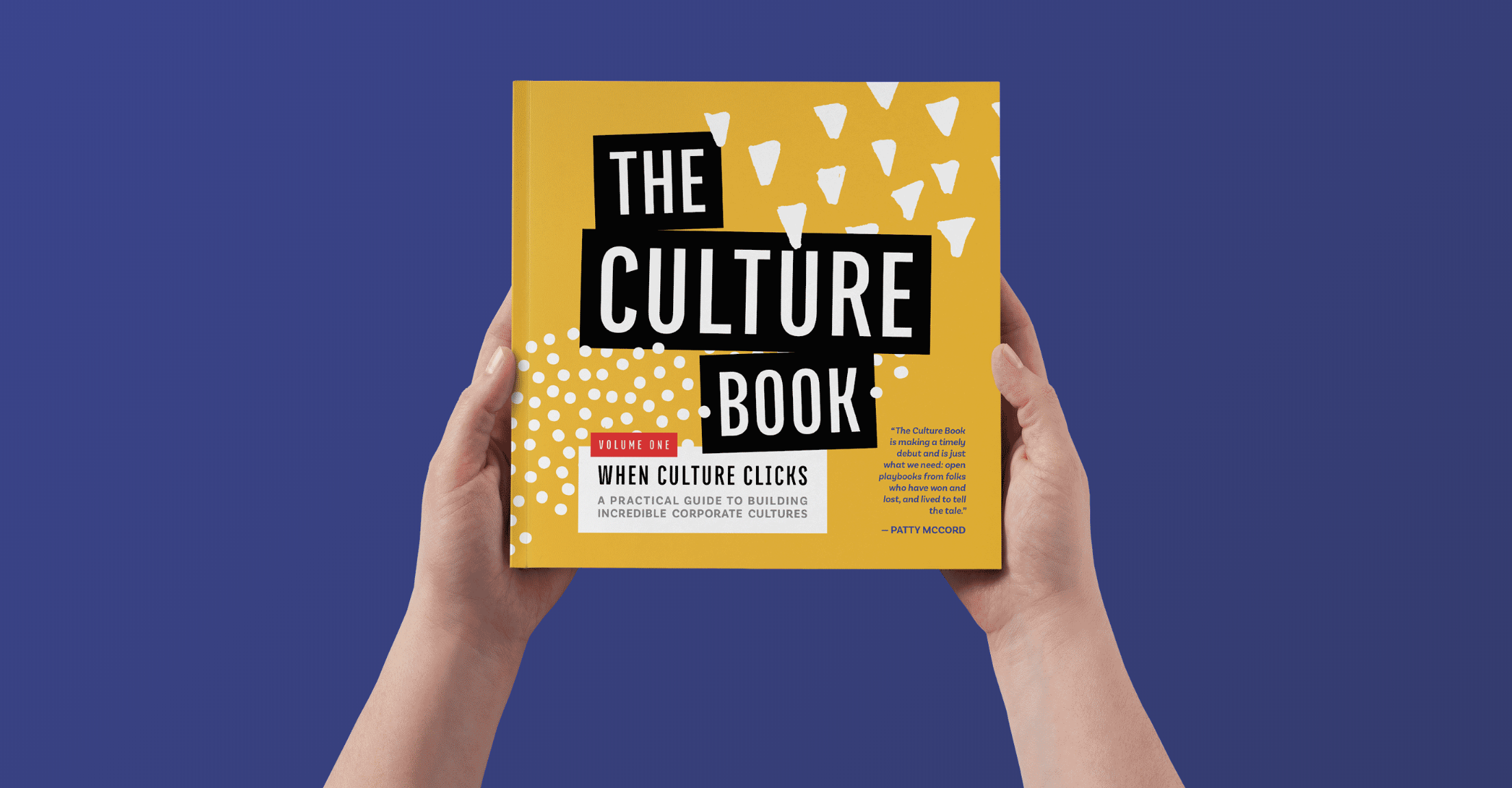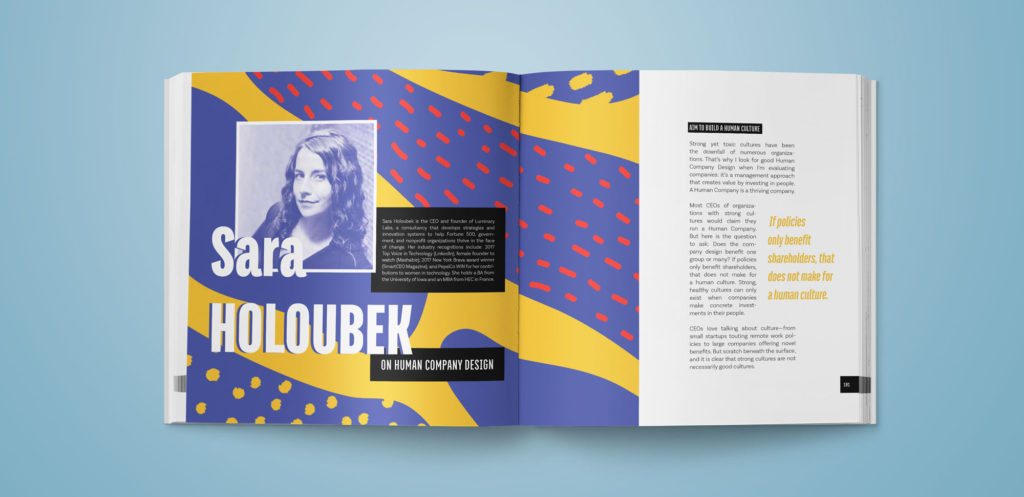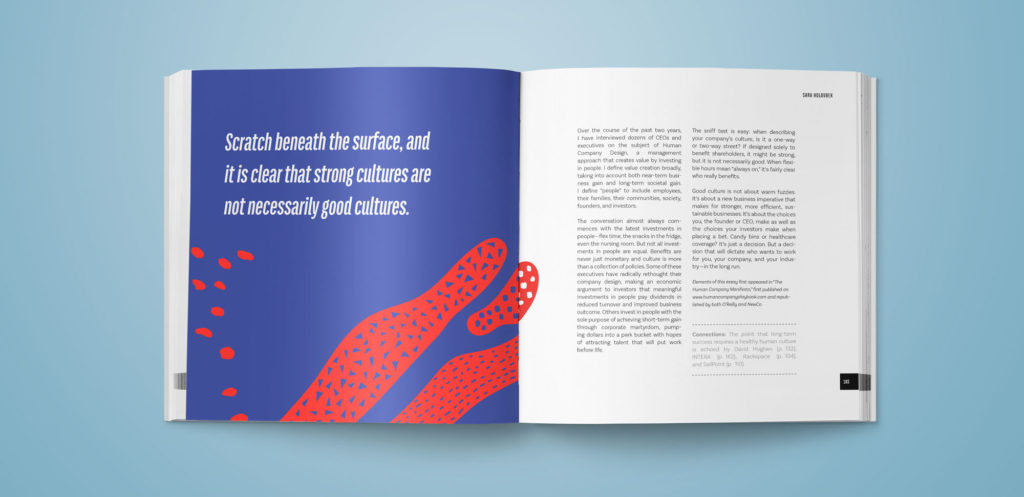“The Culture Book” — a new anthology from Culturati and Weeva — features stories and advice on corporate culture building from leaders, entrepreneurs, investors, and experts. The book includes an essay from Luminary Labs founder and CEO Sara Holoubek, alongside chapters from organizations like Netflix, Southwest Airlines, WP Engine, Goodwill, Ben & Jerry’s, and the Navy SEALS.
The text of Sara’s essay is republished below. Order your own copy of the book to read 31 additional stories from business leaders.
Strong yet toxic cultures have been the downfall of numerous organizations. That’s why I look for good Human Company Design when I’m evaluating companies: it’s a management approach that creates value by investing in people. A Human Company is a thriving company.
Most CEOs of organizations with strong cultures would claim they run a Human Company. But here is the question to ask: Does the company design benefit one group or many? If policies only benefit shareholders, that does not make for a human culture. Strong, healthy cultures can only exist when companies make concrete investments in their people.
CEOs love talking about culture — from small startups touting remote work policies to large companies offering novel benefits. But scratch beneath the surface, and it is clear that strong cultures are not necessarily good cultures.
Scratch beneath the surface, and it is clear that strong cultures are not necessarily good cultures.
Over the course of the past two years, I have interviewed dozens of CEOs and executives on the subject of Human Company Design, a management approach that creates value by investing in people. I define value creation broadly, taking into account both near-term business gain and long-term societal gain. I define “people” to include employees, their families, their communities, society, founders, and investors.
The conversation almost always commences with a discussion of the latest investments in people — perks such as flex time, the snacks in the fridge, or even the nursing room. But not all investments in people are equal. Benefits are never just monetary and culture is more than a collection of policies. Some of these executives have radically rethought their company design, making an economic argument to investors that meaningful investments in people pay dividends in reduced turnover and improved business outcome. Others invest in people with the sole purpose of achieving short-term gain through corporate martyrdom, pumping dollars into a perk bucket with hopes of attracting talent that will put work before life.
The sniff test is easy: when describing your company’s culture is it a one-way or two-way street? If designed solely to benefit shareholders, it might be strong, but it is not necessarily good. When flexible hours mean “always on,” it’s fairly clear who really benefits.
Good culture is not about warm fuzzies. It’s about a new business imperative that makes for stronger, more sustainable businesses.
Good culture is not about warm fuzzies. It’s about a new business imperative that makes for stronger, more sustainable businesses. It’s about the development of an inclusive talent pool. It’s about a smarter, more efficient way to do business. It’s about the choices you, the founder or CEO make, as well as the choices your investors make when placing a bet. Candy bins or healthcare coverage? It’s just a decision. But a decision that will dictate who wants to work for you, your company, and your industry — in the long run.
Elements of this essay have appeared in “The Human Company Manifesto,” first published on the Human Company Playbook website and republished by both O’Reilly Media and NewCo Shift.
Sara is a member of the Culturati Summit’s National Advisory Board. See highlights from the 2018 summit, where Sara shares her favorite insights from Patty McCord’s remarks:



